Headlines and events archive
Displaying 801 - 850 of 1944
You may also find an archive of news published in the media which are related with the Instituto de Astrofísica de Andalucía - CSIC.
Pages

|
31/01/2017 - 12:30
Asteroid surfaces: irradiation and VIS-IR micro-spectroscopy in the laboratory Primitive extraterrestrial materials, such as meteorites and dust collected by sample return missions, are characterized by a large compositional heterogeneity at different scales. This heterogeneity has been observed in the laboratory by different techniques. Among these, micro-IR spectroscopy has the advantage of being totally non-destructive and allowing direct comparison with astronomical observations. With the development of Focal Plan... Dr. Rosario Brunetto |

|
26/01/2017 - 12:30
Novae as Lithium factories in the Milky Way The abundance of Lithium observed in very young stellar populations is ~4 times larger than the primordial one estimated by recent Planck measurements. Since Lithium is easily destroyed in stellar interiors, the search for astrophysical sources responsible for of the observed Lithium over-abundance was a mystery for decades. In this seminar I'll discuss the recent detection of Lithium in the spectra of two slow novae, V1369 Cen and V5668 Sgr,... Dr. Luca Izzo |

|
19/01/2017 - 12:30
Witnessing the birth of a planetary nebula Planetary nebulae are one of the last stages of evolution of stars like our Sun. The beginning of photoionization, giving rise to a new planetary nebula, will certainly produce dramatic changes in the object, but this instant is difficult to observe, since it will only take a few decades. During of a long-time study of water masers in post-AGB stars and planetary nebulae, we identified an object (IRAS 15103-5754) in which we believe... Dr. Jose Francisco Gómez |

|
01/12/2016 - 12:30
History of solar activity recorded in polar ice Un equipo de investigación internacional en el que participa el conferenciante ha reconstruido la actividad magnética solar de los últimos diez mil años analizando para ello la concentración de isótopos cosmogénicos. Dr. Antonio Ferriz |

|
02/12/2016 - 12:30
Multiwavelength analysis of PBC J2333.9-2343 Nuclear activity as is observed in active galactic nuclei (AGN) might be a phase occurring in all galaxies, and this activity could be recurrent. A perfect laboratory to test these scenarios are the giant radio galaxies, since their emission can be as old as 10⁷-10⁸ years. In the present work we focus on the nucleus of PBC J2333.9-2343, which called our attention because it is a giant radio galaxy that shows different and incompatible... Dr. Lorena Hernández García |

|
24/11/2016 - 12:30
Big Data at the IAA: main ideas and how to run a real application at the IAA computation cluster A brief description of the Big Data paradigm is presented minimizing the technical details, reviewing previous work at IAA and showing a practical case demonstration. Dr. Rafael Morales |
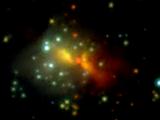
|
14/11/2016
A startburst reveals the formation mechanism of massive stars A startburst reveals the formation mechanism of massive stars |

|
17/11/2016 - 12:30
The CaII triplet in Quasars: from the accretion disk to the star formation Active galactic nuclei (AGN) show a great diversity of optical and UV emission line properties. Dynamical and physical models should be built accordingly. The presence of strong FeII emission suggested the existence of a region shielded from high energy photons, where the low ionization lines are emitted. Mary Loli Martínez Aldama |

|
10/11/2016 - 12:30
Very High Energy gamma rays from AGNs: key for AGN structure and cosmological studies The key for AGN structure and cosmological studies. Dr. Josefa Becerra |
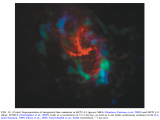
|
09/11/2016 - 12:00
Star Formation Close to and Accretion onto the Supermassive Black Hole Sgr A* The environment of Sgr A* provides a window to the close-up study of star formation under extreme physical conditions Prof. Farhad Yusef-Zadeh |

|
08/11/2016
The Institute of Astrophysics of Andalusia participates in the candidacy of Granada as "City of Science" The Institute of Astrophysics of Andalusia participates in the candidacy of Granada as "City of Science" |

|
02/11/2016
Study confirms that novae, a type of explosive phenomenon in stars, are main source of lithium in the universe Large amounts of beryllium-7, an element that decays into lithium, have been found inside nova Sagittarii 2015 N.2 |

|
03/11/2016 - 12:30
A search for neutral gas outflows in nearby (U)LIRGs I will present a search for outflows in a sample of 38 local (U)LIRG systems (51 individual galaxies) observed with VIMOS/VLT and SINFONI/VLT integral field units. Dr. Sara Cazzoli |

|
01/11/2016
IAA International Office |
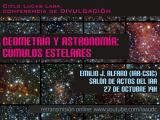
|
27/10/2016 - 19:00
Geometry and astronomy: stellar clusters Geometry and astronomy: stellar clusters Emilio J. Alfaro |

|
24/10/2016 - 12:30
RadioAstron observations in the jet in 0836+710 Space VLBI observations with RadioAstron provide an extraordinary improvement of angular resolution. Laura Vega |

|
20/10/2016 - 12:30
The Unfied Model for AGN 30 years after, and recent support for an Evolutionary Model of AGN I shall comment on the difficulties faced today by the so called "Unified Model" (UM) for AGN. Prof. Deborah Dultzin Kessler |
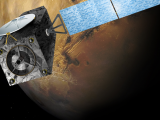
|
20/10/2016
ExoMars mission, in orbit around Mars The TGO satellite has successfully completed the ignition needed to be captured by Martian gravity |

|
19/10/2016
La 2 premieres documentary about UPWARDS, a project for the study of Mars led by the Institute of Astrophysics of Andalusia The broadcast, which will take place on Wednesday 19 at 18pm, coincides with the entry into orbit around Mars of the TGO module and the the Schiaparelli module landing on the red planet, both of the ExoMars (ESA) mission |

|
13/10/2016 - 14/10/2016
New Instrumentation and Legacy Projects for Calar Alto Granada |
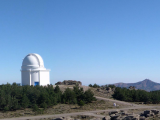
|
10/10/2016
New Instrumentation and Legacy Projects for Calar Alto New Instrumentation and Legacy Projects for Calar Alto |

|
04/10/2016 - 12:30
The VIMOS Ultra Deep Survey: galaxy formation and evolution, 13Gyr back in cosmic time The first phases of galaxy formation and evolution remain poorly understood and improved observational constraints are needed to test the theoretical picture and simulations. I will present the results from the VIMOS Ultra-Deep Survey (VUDS) Prof. Olivier Lefevre |
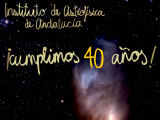
|
02/11/2016
40 aniversario del IAA Special issue of the IAA: Información y Actualidad Astronómica magazine to celebrate the 40th anniversary of the Institute of Astrophysics of Andalusia |
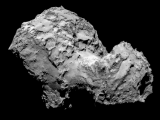
|
29/09/2016
Rosetta's grand finale The spacecraft will perform tonight a controlled descent to the surface of the comet 67P, during which it will continue collecting data |
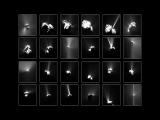
|
26/09/2016
Summer fireworks on Rosetta's comet Brief but powerful outbursts seen from Comet 67P/Churyumov–Gerasimenko during its most active period last year have been traced back to their origins on the surface |
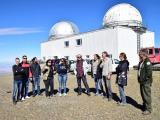
|
19/09/2016
Visit of the Delegation of Environment of the Junta de Andalucía at Sierra Nevada Observatory La visita se enmarca en un reciente acuerdo de colaboración para mejorar la calidad del cielo |

|
29/09/2016 - 12:30
Presentation of the HETH group (High Energy Transients and their Hosts) HETH (High Energy Transients and their Hosts) is one of the youngest groups at IAA, founded in 2012, and belongs to both the extragalactic and stellar department. Thanks to recent success in funding applications, both by the group and by external researchers, HETH has now grown to a group of 7 young researchers. Dr. Cristina Thöne |

|
22/09/2016
New breakthrough in methodology to estimate life span of stars Size of star nuclei determines amount of combustible available, and hence evolution and life span of a star |
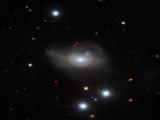
|
15/09/2016
Mrk1018: the black hole that returns to the shadows Mrk1018 is a supermassive black hole located at the center of a distant galaxy that has changed its appearance twice in thirty years |

|
15/09/2016 - 12:30
Proxima b: What could I say you already do not know about it? This august, we have published clear evidence of a planet orbiting the nearest star to Earth, Proxima Centauri, at a distance of 1.295 parsecs (4.2 ly) and one of the best-studied low-mass star. Dr. Pedro Amado |
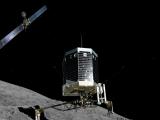
|
07/09/2016
Philae found! Less than a month before the end of the mission, Rosetta’s high-resolution camera has revealed the Philae lander wedged into a dark crack on Comet 67P/Churyumov–Gerasimenko. The IAA has participated in the OSIRIS camera science and design. |

|
22/09/2016 - 12:30
Delving into the gas-phase of CALIFA galaxies to trace O and N gradients CALIFA (Calar Alto Legacy Integral Field Area survey) has provided spatially resolved optical spectra of thousands of HII regions in spiral galaxies of the Local Universe whose properties can be linked with the integrated properties of the host galaxies... Dr. Enrique Pérez Montero |
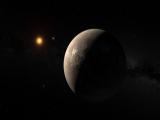
|
24/08/2016
Earthlike planet discovered orbiting around nearest star to Sun Located in the habitable zone, the planet orbits around its star in eleven days and has a mass of at least 1.3 times that of the Earth. Named Proxima B, it orbits around Proxima Centauri, a red dwarf located only four light years away from our own planet |
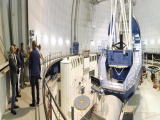
|
12/07/2016
University of Almería, Calar Alto Observatory and IAA will enhance astronomical knowledge Among the collaboration projects that will be launched, stand out the creation of an astronomical lecture room at the UAL, the incorporation of trainees at the Observatory and the creation of a summer course that approach its work to the whole society |
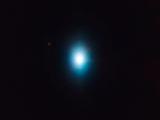
|
07/07/2016
The weird system of star CVSO 30: two planets at extreme distances A direct image has been taken of a planet so far away from his star that it takes twenty-seven thousand years for completing one orbit, and it shares the system with another planet which completes its orbit in just eleven hours |
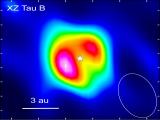
|
30/06/2016
Discovery of miniature planetary formation disk will enable observation of planetary gestation in real time Young star XZ Tau B displays a dwarf protoplanetary disk which may evolve up to five hundred times faster than bigger disks and display observable changes in just a few months |
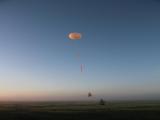
|
03/05/2016
Project ORISON to study the cosmos from stratospheric balloons launched ORISON, financed by the European Union through the H2020 scheme, is a project conducted by the Instituto de Astrofísica de Andalucía, the University of Stuttgart, the Max Planck Society, and Ernst & Young |
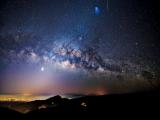
|
27/06/2016
The IAA hosts a conference on the quality of the sky The dark sky as equity or fighting light pollution constitute some of the axes of the session. The conference seeks to create a meeting place where the various actors involved in the protection of Andalusian sky will exchange knowledge, perspectives and experiences |

|
23/06/2016 - 12:30
Using the local gas-phase oxygen abundances to explore a metallicity-dependence in SNe~Ia luminosities In this talk I present an analysis of the gas-phase oxygen abundances of a sample of 28 galaxies in the local Universe (z<0.02) hosting Type Ia Supernovae (SNe Ia). The data were obtained with the 4.2m William Herschel Telescope (WHT). Manuel Moreno Raya |

|
16/06/2016 - 12:30
Space VLB interferometer RadioAstron: status and results The RadioAstron Space VLBI mission utilizes the 10-m radio telescope on-board the dedicated Spektr-R spacecraft to observe cosmic radio sources with an unprecedented angular resolution at 92, 18, 6 and 1.3 cm. Yuri Kovalev |

|
09/06/2016 - 12:30
Blazars: Order and Disorder Blazars are the most luminous persistent objects in the sky. They emit light across the entire electromagnetic spectrum, from low-energy radio waves to high-energy gamma-rays, and they exhibit variability on timescales that range from years down to minutes. The launch of the Fermi Large Area Telescope (LAT) in 2008 has ushered in a new era of high-energy astrophysics. Prof. Nicholas Macdonald |

|
02/06/2016 - 12:30
Star formation and AGN activity in the most luminous LINERs in the local universe In this talk I will focus on the most luminous LINERs in the local universe, where we studied their SF and AGN activity in order to understand the LINER phenomenon in relation to star-forming galaxies and to compare their properties with those of the LINERs at z ~ 0.3. Dr. Mirjana Povic |

|
30/05/2016 - 03/06/2016
Blazars through Sharp Multi-Wavelength Eyes Málaga |

|
25/05/2016 - 12:30
ECS: Diseño y construcción de Observatorios Astronómicos ECS es una empresa de ingeniería especializada en Observatorios Astronómicos. Realiza los pertinentes estudios y evaluaciones de calidad de cielo, logística y necesidades específicas, para ubicar y diseñar el observatorio. Francisco Ángel Espartero Briceño |

|
19/05/2016 - 12:30
The magnetic field vector in solar chromospheric structures: the diagnostic potential of the near infrared He I 1083nm triplet The solar chromosphere is permeated by solar structures such as sunspots, surges, flare ribbons, prominences (filaments) or spicules, where non-local thermodynamic equilibrium effects dominate the state of the plasma and where the magnetic fields are expected to be much lower in intensity than in the photosphere underneath. Dr. David Orozco |

|
12/05/2016 - 12:30
Sgr A* and its environment: insights from X-ray observations Almost every massive galaxy has at least one super-massive black hole (SMBH) at its center. Most (>90%) of those SMBHs are quiet. Understanding the accretion of low-luminosity SMBHs represents a very important and fundamental problem in astronomy. Dr. Daniel Wang |
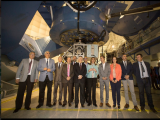
|
04/05/2016
Susana Diaz commits the Andalusian government support to the continuity of Calar Alto Observatory The president of Junta de Andalucía has visited the observatory on the occasion of the presentation of CARMENES project, which will search for exoplanets where the conditions could allow liquid water |

|
28/04/2016
Launch of the UFFO Tracking Space Telescope, designed to capture the early moment of Gamma-Ray Bursts The UFFO international collaboration has developed a tracking space telescope that will detect X-rays and track UV/optical lights emitting from very early moment of Gamma-ray Bursts (GRBs) |

|
05/05/2016 - 12:30
Formación Estelar: ¿podemos acotar el problema? Mientras que la evolución estelar conforma un cuerpo teórico bien estructurado, incluyendo aquí las últimas fases de la misma, la formación estelar está lejos de admitir una formulación teórica predictiva que permita, conociendo las propiedades físicas de la nube molecular, pergeñar las propiedades de la futura población estelar naciente. Dr. Emilio Alfaro |

|
28/04/2016 - 12:30
The lifetime dilemma of evaporating black holes The standard view is that black holes exist, maybe not with all the properties of strict black holes in classical General Relativity, but sufficiently close to them that one does not need worrying in the astrophysical practice. Dr. Carlos Barceló |